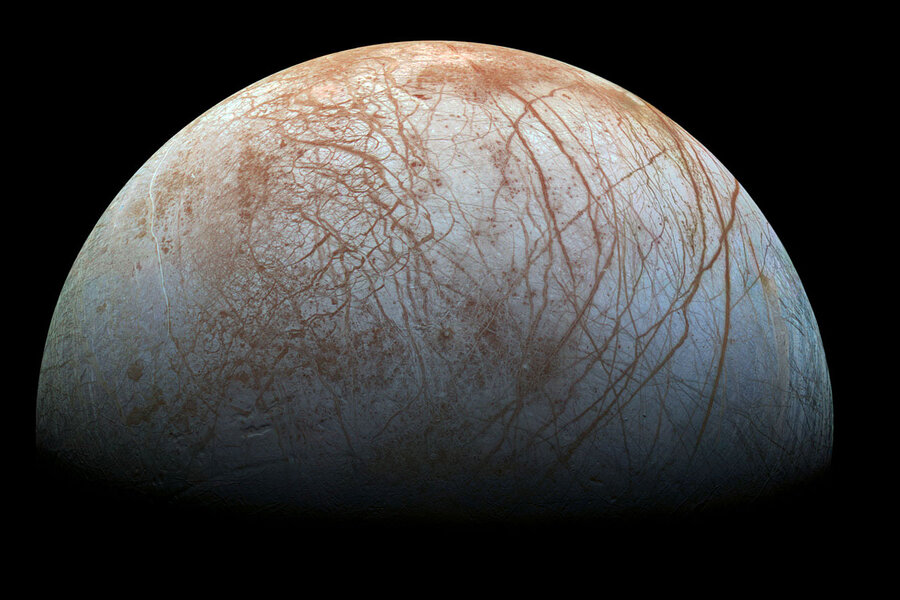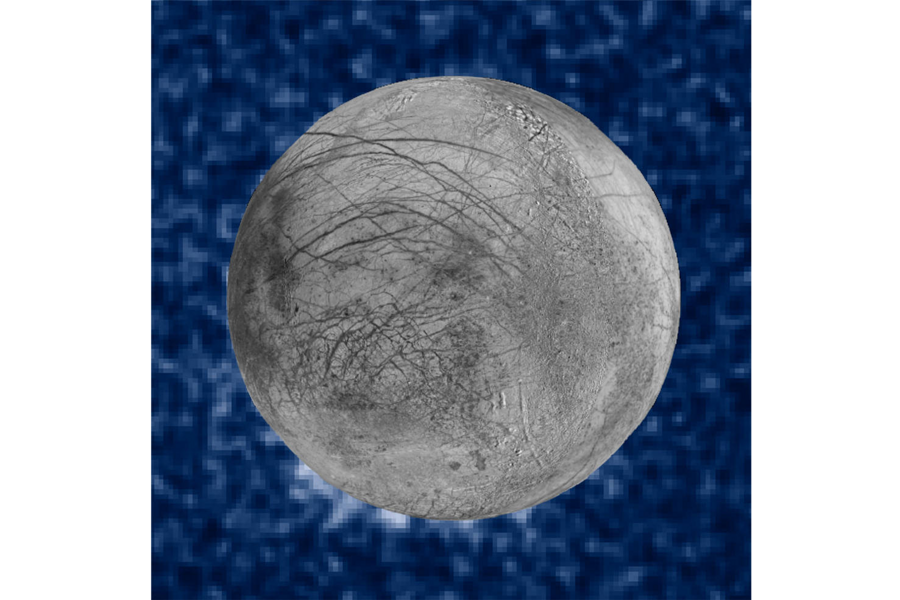Why scientists are so thrilled by the icy geysers on Europa
Loading...
Scientists may have just taken one tiny step forward in the hunt for alien life – and it may be in our own cosmic backyard.
Europa, Jupiter's icy moon, is a strong candidate for finding extraterrestrial life. Under its frozen exterior, the moon has a vast subsurface ocean that might be conducive to life as we know it. And now scientists may have found an easier way to investigate Europa's habitability.
Giant water plumes appear to be spewing from the southern polar region on Europa in new Hubble images, released during a NASA press conference Monday.
"If plumes exist, this is an exciting finding as it potentially gives easier access to the ocean below and would allow us to search for signs of life in the ocean of Europa without needing to drill through miles of ice," William Sparks of the Space Telescope Science Institute (STScI) in Baltimore, who led the research, said in the press conference.
A robotic rover, similar to the ones NASA sent to Mars, might land on the icy surface to sample what it can from Europa's subsurface ocean. That could reveal signs of life or at least information about the chemicals in the moon's water. A plume would make such an investigation easier.
But the presence of a plume could also mean scientists could conduct the same investigation without landing on Europa's surface.
And such an investigation has already been done elsewhere in the solar system. NASA's Cassini spacecraft has sampled icy plumes spewing from Saturn's icy moon Enceladus and found that its subsurface ocean is surprisingly salty and contains organic molecules.
"It opens a portal to the ocean," says Jonathan Lunine, director of the Cornell University Center for Astrophysics and Planetary Science who was not part of the study, in an interview with The Christian Science Monitor. Although the same information can be derived in other ways without the presence of a plume, he says, "If there is a plume, or there are plumes, it provides a more direct way to get at the ocean with a flyby spacecraft."
This isn't the first time scientists have spotted evidence of such icy geysers on Europa. In 2012, a team independently spotted what seemed to be water plumes spouting from the same southern region on the moon.
But that doesn't reduce the excitement for scientists, Dr. Lunine says. "Hubble is really being pushed to its limit to be able to detect whatever material this is," he says. "The more times you detect it, the more confidence you have that it is what you think it is," in this case, a plume of water vapor.
"The discovery of water geysers on Europa – and geysers by the way that are much more prolific than at Enceladus – means that we have high-priority astrobiology target that is much closer than Saturn and within reach of solar-powered missions," Alan Stern, a planetary scientist at the Southwest Research Institute in Boulder, Colo., told The Christian Science Monitor in 2013. "If we're looking for life in the solar system, Europa has an ocean on the inside, it's spewing liquid water out, meaning there's a heat source. I don't know how loud Europa has to shout at us to pay attention."
NASA's Hubble Space Telescope snapped the new images of Europa by looking at the moon's silhouette against Jupiter.
"The atmosphere of an extrasolar planet blocks some of the starlight that is behind it," explained Dr. Sparks in a NASA press release. "If there is a thin atmosphere around Europa, it has the potential to block some of the light of Jupiter, and we could see it as a silhouette. And so we were looking for absorption features around the limb of Europa as it transited the smooth face of Jupiter."
It has long been known that Europa has a vast ocean beneath its icy surface. Some models have liquid water sloshing throughout the moon's subsurface, in an ocean perhaps 10 times as deep as Earth's.
Given Europa's distance from the sun, the presence of liquid water on a frigid moon (minus 260 to minus 370 degrees F. on its surface) might seem unusual. But scientists point to gravity to explain the mysterious ocean world. Jupiter's tidal forces cause the moon to flex as it orbits the planet. As it's pulled, friction and heat are produced, preventing the liquid water from freezing, they hypothesize.
Those same forces might be behind geysers spewing out into space from the moon's subsurface ocean.
In the hopes of taking a better look at Europa to examine whether it is habitable – or already inhabited – NASA's 2016 budget includes $175 million specifically for a lander mission to Jupiter's ocean moon. NASA is already planning a 2022 launch for a mission to Europa.
If scientists are able to detect life on Europa, Enceladus, or Titan (another Saturn moon that intrigues alien-hunting scientists), it could reveal clues into just how readily life can emerge, Lunine says. If life has arisen elsewhere in our own solar system, he says, it probably is a common occurrence throughout the cosmos.










